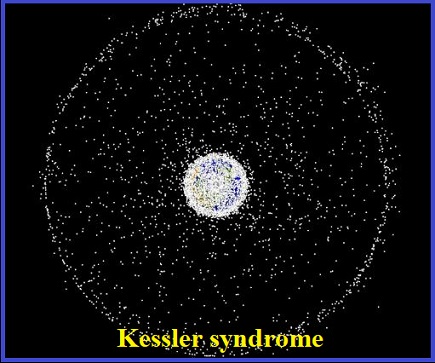Updated By: LatestGKGS Desk
Kessler syndrome ksp and its relation to Orbital debris

Kessler syndrome ksp and its relation to Orbital debris
The Kessler syndrome also is known as the Kessler effect, or collisional cascading or ablation cascade is a scenario in which the density of objects in low Earth orbit (LEO) is high enough that collisions between objects could cause a cascade in which each collision generates space debris that increases the likelihood of further collisions.
The Kessler syndrome or Kessler effect was proposed by the NASA scientist Donald J. Kessler in the year 1978.
As per the Kessler syndrome, the probability of a collision of a spacecraft with a particle more than 10 cm is very rare. But a large density of the orbital junk is capable of causing a chain collision.
One collision will create more debris and increase the likelihood of further collisions. Such collisions will destroy satellites worth millions of dollars and could render space exploration unfeasible for centuries.
Most of these objects and particles will ultimately fall to earth. This is because of the fact that earth’s gravitational force.
Orbital debris
Orbital debris is the man-made junk scattered in the space around the earth. Earth’s gravity pulls these man-made objects and particles into orbiting (revolving) around it.
According to NASA, a half-century of space exploration has cluttered the space above the earth’s atmosphere with millions of detectable objects. It has estimated about 19,000 of these objects are larger than 10cm and another 500,000 particles are between 1 to 10 cm in diameter.